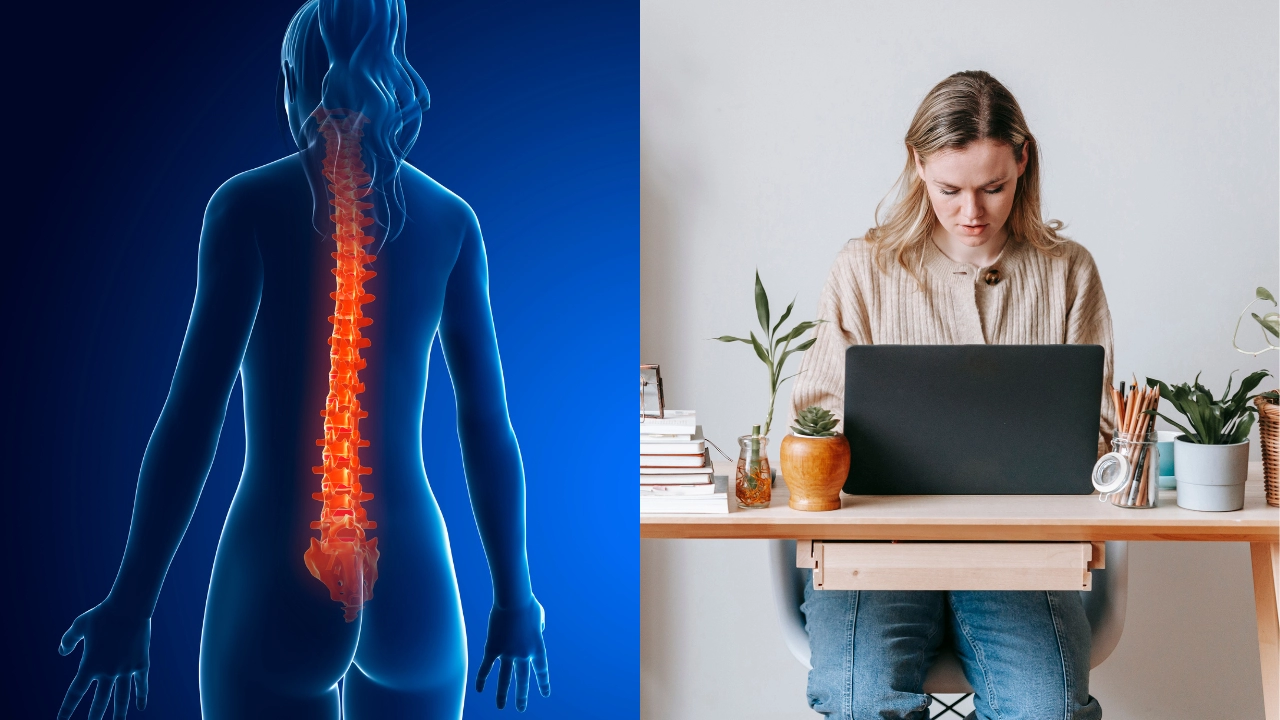In this fast-track digital age, desk jobs have become the backbone of many professions and due to this, the spine often bears the brunt of long hours spent sitting. Over time, poor posture and lack of movement can lead to various spine issues, including back pain, herniated discs, and even sciatica. Often neglected, back pain has now become a major health concern.
Spending long hours at a desk can exacerbate a common problem: poor spinal health. Many office workers neglect proper spine care during extended work hours. However, with a few simple adjustments, it is possible to maintain a healthy, well-functioning spine. To learn effective strategies, we speak with an expert for practical advice on maintaining spinal health in office settings.
Maintain a Proper Posture
“One of the most important factors in maintaining spine health during desk work is posture. Sitting with poor posture can lead to chronic pain, discomfort, and more severe spinal problems over time, says Dr Naveen S Tahasildar, Consultant Spine Surgeon, Sparsh Hospital, Infantry Road.
Sit Straight: It is very important to ensure the back is well-supported. “We need to keep the shoulders relaxed but not slumped, with the spine aligned. Ensure that the buttocks touch the back of the chair to provide adequate support to the lower back and the natural curve of the spine should be maintained,” says Dr Tahasildar.
Feet Flat on the Floor: Ideally, the feet should be flat on the floor, with your knees at a right angle. “If your chair is too high, consider using a footrest to ensure proper alignment,” he advises.
Monitor at Eye Level: The screen of the PC or Laptop should be at eye level to prevent neck strain. Adjust the position to avoid looking down at the monitor. Leaning forward or slouching is not good for spine health.
Regular Movement: The human body is not designed for prolonged immobility, and sitting for hours at a time can cause the spine to stiffen, reducing its flexibility and causing discomfort. “Take breaks at every 30-40 minutes. Even if it’s just a quick 2–3-minute stretch, this will help relieve pressure on the spine. Standing up, walking around the office, or simply shifting positions can make a significant difference,” says the expert.
Stretching Exercises: Incorporate simple stretches throughout the day. “A seated spinal twist or neck stretches can relieve tension in the neck and upper back, while seated hamstring stretches can help with lower back tightness,” he says.
Spine Health Exercises for Desk Workers
Exercise plays an essential role in maintaining good spine health. Here are some exercises Dr Tahasildar says can be done even in an office setting:
Chin Tuck: The day job workers should always try to sit up straight and gently pull their chin toward their chest. They should hold this position for 5-10 seconds, then relax. “I recommend repeating this a minimum of 10 times for the neck and upper back muscles strength,” he says.
Seated Cat-Cow Stretch: Sit at the edge of a chair with the feet flat on the floor and hands on the knees. “As you inhale, arch your back, lift your chest, and look up (Cow position). You should exhale, round your back, and drop the chin toward the chest (Cat). This stretching is particularly good for spinal flexibility,” the expert says.
Standing Back Extensions: The individual should stand up, place their hands on their lower back, and gently lean backwards to stretch the lower back. Holding this position for only 10 seconds has many benefits. This should be repeated 5-10 times.
Hip Flexor Stretch: Stretching is always good for desk job workers. “Stand and step back with one foot and keep the other foot forward with a bent knee. Hold the stretch for 15-20 seconds to release tension in the hip flexors, which can become tight from sitting for long periods,” says Dr Tahasildar.
Get Latest News Live on Times Now along with Breaking News and Top Headlines from Health and around the world.

